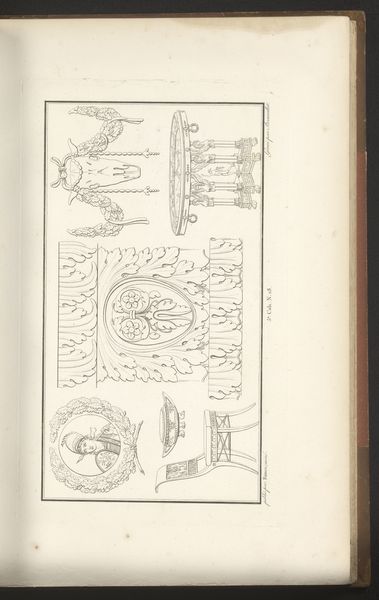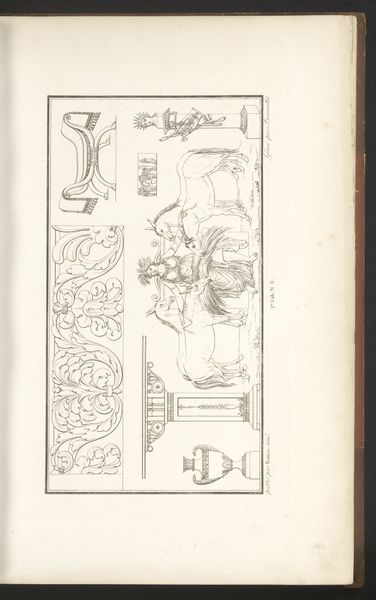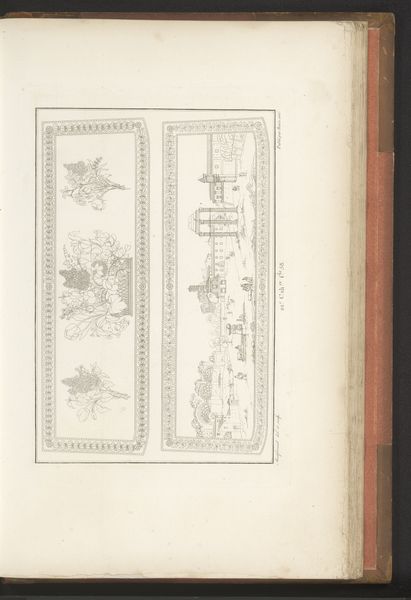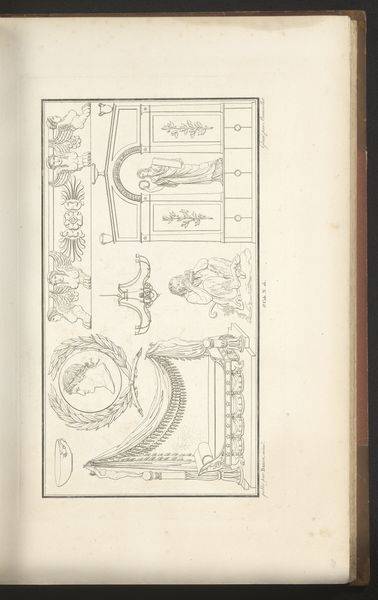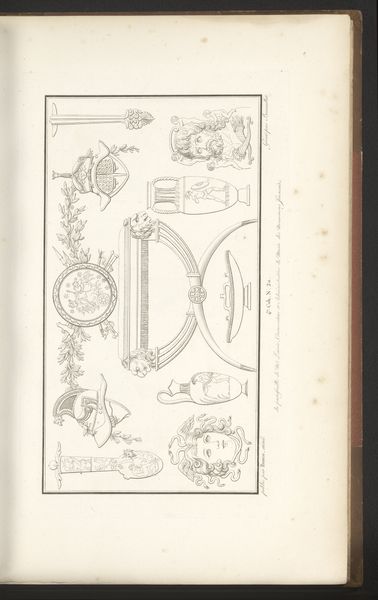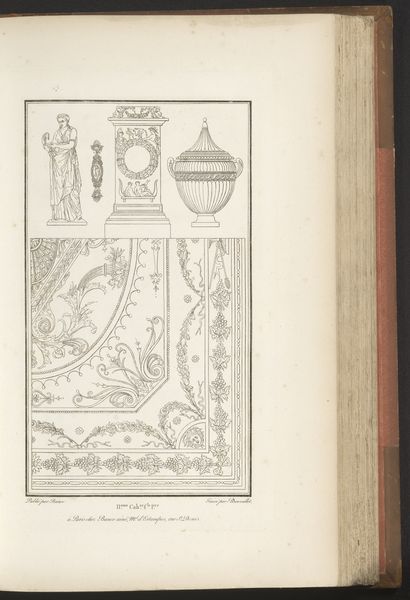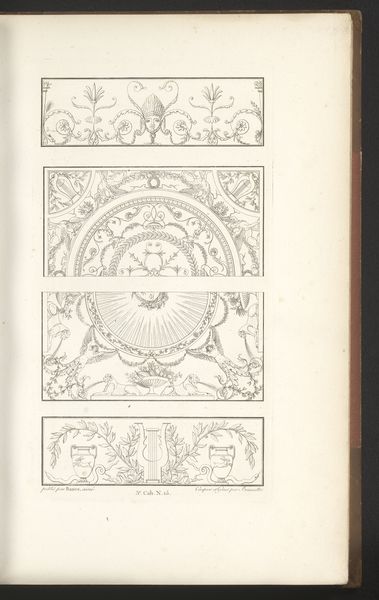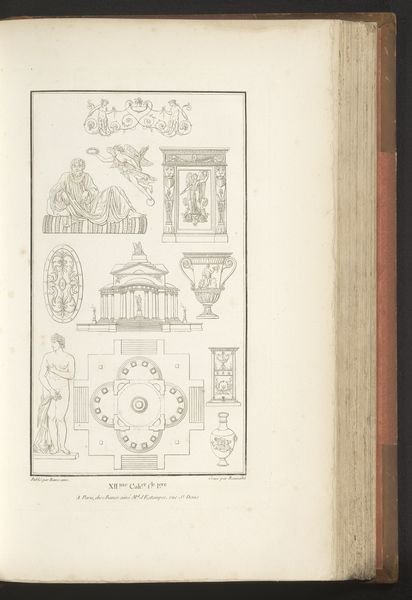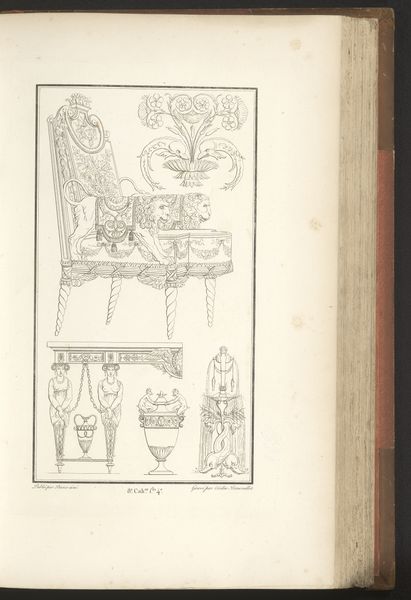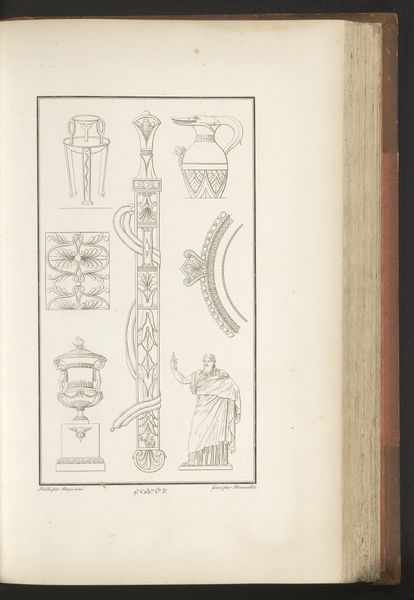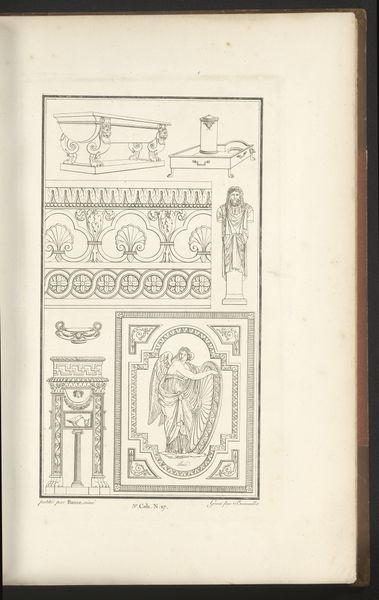
drawing, ink, pencil
#
drawing
#
pen sketch
#
classical-realism
#
ink
#
geometric
#
pencil
#
line
#
history-painting
#
academic-art
Dimensions: height mm, width mm
Copyright: Rijks Museum: Open Domain
Editor: This is a drawing by Pierre-Nicolas Beauvallet from 1820. It’s called "Friezen, kandelaar en vrouw op leeuwenkar," and it looks like it's ink and pencil on paper. I'm immediately struck by how classical everything seems—almost like an inventory of ancient motifs. What do you see in this piece? Curator: It’s more than just an inventory, it’s a reflection of its time! The early 19th century was obsessed with antiquity. Think about what this fascination signified. Why did they turn to classical forms? Who had access to that history, and who was excluded from it? These images of powerful women on lion-led chariots, these eagles and elaborate candlesticks—they're invoking a specific kind of power and authority rooted in European history. Editor: So, it's about power... But who is this woman exactly? And the lion-led chariot seems like an odd choice. Curator: Exactly! It’s performative, isn’t it? Consider the gender dynamics. Who gets to be associated with this "classical" power? The lion, often associated with strength and royalty, is here subdued, directed by a woman. Is it a celebration of female empowerment, or a commentary on the controlled and often constrained roles women occupied even then? Whose gaze does this art cater to? And how might we reclaim or reinterpret these symbols today, challenging those historical power structures? Editor: I see what you mean! Looking at it now, it's less about simple admiration of the classics and more about understanding the complex social and political landscape that shaped its creation – and how those echoes still resonate. Curator: Precisely. And by interrogating these historical depictions, we equip ourselves to deconstruct contemporary power dynamics, understanding who is represented, how, and why.
Comments
No comments
Be the first to comment and join the conversation on the ultimate creative platform.


